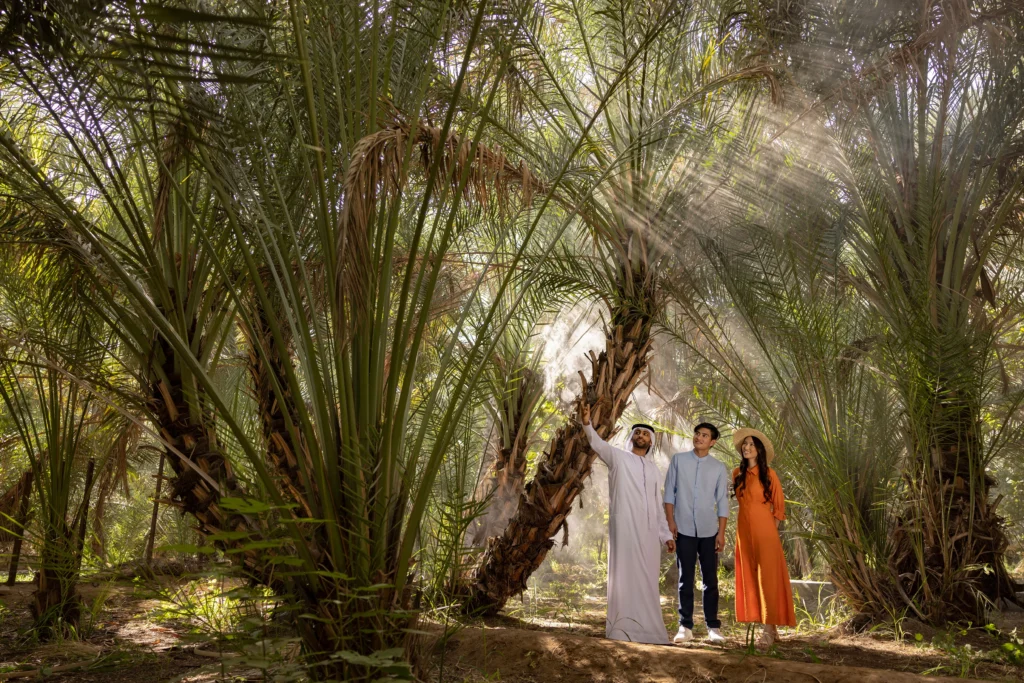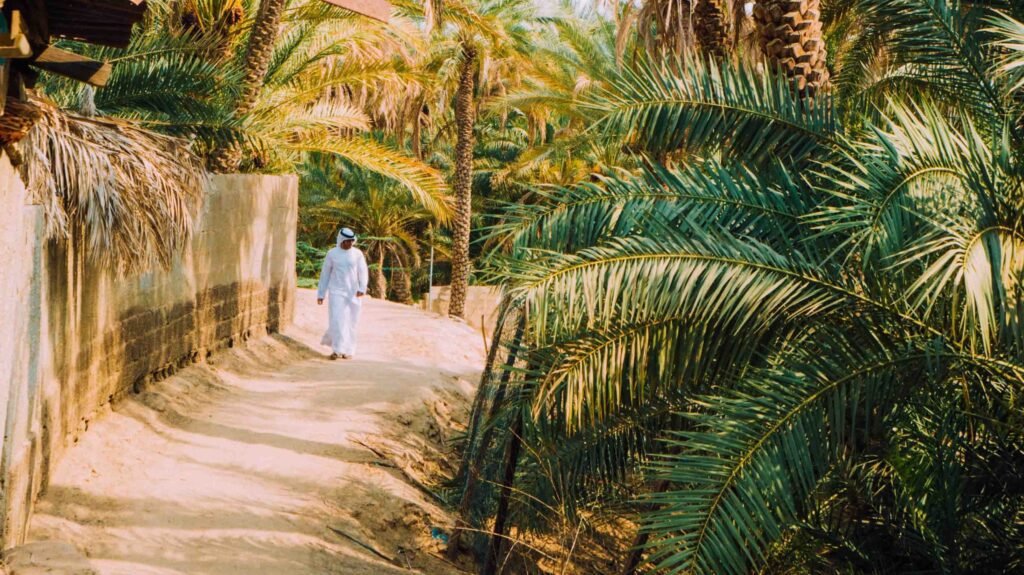Tucked away in the heart of the desert, Al Ain Oasis is one of the UAE’s hidden treasures. With over 147,000 date palm trees and a unique irrigation system that dates back thousands of years, it is more than just a lush escape—it’s a living, breathing piece of history.
Located in the city of Al Ain, in the emirate of Abu Dhabi, the oasis covers nearly 1,200 hectares. That’s roughly the size of 1,700 football fields. Walking through the shaded paths feels like stepping into a different time. The air is cooler, the light softer, and the rhythm of life slower. It’s hard to believe you’re still in the middle of a desert.
A UNESCO World Heritage Site
In 2011, Al Ain Oasis was recognized by UNESCO as part of the first World Heritage Site in the UAE. This recognition wasn’t just for its beauty. It was for the way the oasis shows how humans have worked with nature for thousands of years to survive and thrive in one of the world’s harshest environments.

The oasis is a symbol of sustainability and human ingenuity. Long before modern technology, people here found ways to grow food, raise families, and build communities in a place with almost no rain.
The Magic of the Falaj System
The secret behind Al Ain Oasis’s green life is its ancient irrigation system, known as the “falaj” (plural: aflaj). This system, believed to be over 3,000 years old, uses a clever network of underground and surface channels to carry water from distant underground sources, mountain aquifers, or wells to the date palm groves and farms.

This water-sharing system was built by hand and is based on gravity. What makes it more impressive is how fair and efficient it is. Every farmer gets their share of water at set times. To this day, some sections of the falaj still work, and local farmers continue to depend on them for growing crops.
The falaj system is not only a technical wonder but also a cultural one. It shows how early communities worked together, respected nature, and passed down knowledge over generations.
A Forest in the Desert
Walking through Al Ain Oasis is like exploring a natural museum. The tall date palms form a green canopy that keeps the sun out and the ground cool. Beneath the trees, you’ll find a second layer of crops—mangoes, bananas, figs, and vegetables—all growing in the shade.
There are more than 100 different types of date palms here. Each one has its own taste, harvest time, and use. Dates have always been a staple of Emirati life. They are rich in nutrients, last a long time without spoiling, and are deeply connected to traditions—from Ramadan meals to wedding feasts.
You can often see farmers working with traditional tools, climbing palm trees with ropes, or tending to small garden plots. Many of them still use organic methods passed down through generations.
More Than Just Trees

Al Ain Oasis is not just about plants. It also gives us a glimpse into the cultural and environmental history of the UAE. Throughout the site, there are signs and interactive exhibits that explain how the oasis system works, how the falaj was built, and what life was like centuries ago.
The Eco-Centre at the entrance helps visitors understand the relationship between nature and culture in this part of the world. Using models, maps, and even virtual reality, it tells the story of how desert communities adapted to their environment long before oil and skyscrapers came along.
There are also old mudbrick buildings and traditional houses around the oasis. These structures were made with local materials that kept homes cool during summer and warm during winter. Some have been restored, while others are left in their original state to show how people once lived.
A Peaceful Retreat
One of the most special things about Al Ain Oasis is how peaceful it feels. Unlike busy cities, the only sounds you hear are birds chirping, water flowing through the falaj, and the soft rustling of palm leaves.
Locals often come here for a quiet walk, a family picnic, or just to relax. Tourists are welcome too, and the pathways are well-marked and wheelchair accessible. You don’t need a guide to explore, but you can take one to learn more deeply about the history and plants.
There are signs in multiple languages, resting areas, and shaded benches along the way. Whether you’re walking, cycling, or simply sitting under a tree, the oasis offers a calm, refreshing break from modern life.
A Link Between Past and Future
Al Ain Oasis isn’t just about preserving the past. It’s also about planning for the future. With climate change and water scarcity becoming global issues, the oasis offers lessons in sustainability that are still relevant today.
Local authorities and UNESCO are working together to protect the site, educate young people, and support traditional farming methods. New technologies, like solar-powered water pumps and digital mapping, are being introduced—but always in a way that respects the old ways.
The aim is to keep Al Ain Oasis alive not just as a tourist spot, but as a working farm, a cultural landmark, and a green heart of the city.
Why You Should Visit
If you’re in the UAE, a trip to Al Ain Oasis is worth your time. It’s a place where you can breathe fresh air, learn about ancient wisdom, and feel connected to nature in a very real way.
Whether you’re interested in history, nature, agriculture, or just looking for a peaceful walk, Al Ain Oasis has something for you. It’s a reminder that even in the middle of the desert, life can not only survive—but thrive—with a bit of knowledge, care, and community spirit.
Also read: Al Ain Zoo and Gardens: A Beautiful Blend of Wildlife and Nature













